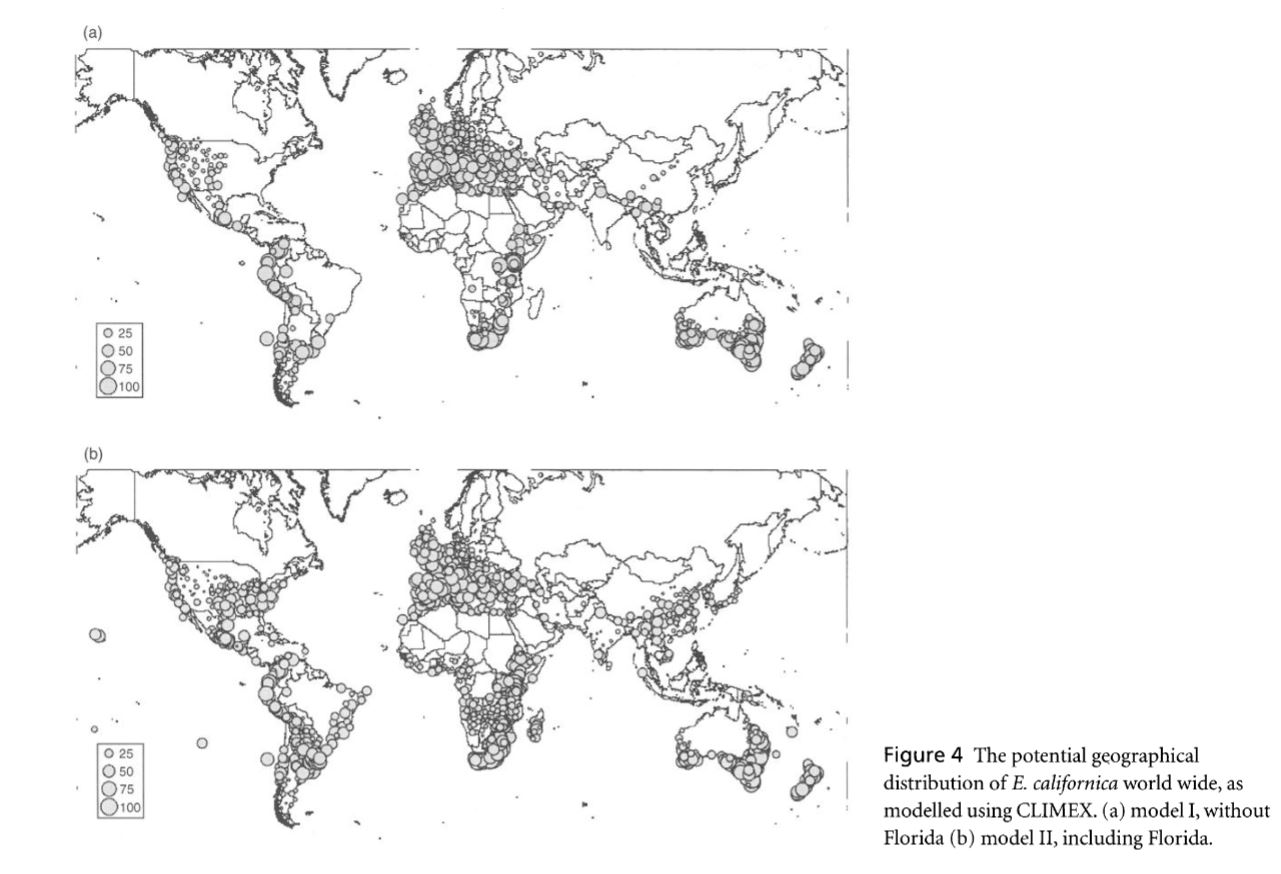Wharton, Trudi N., and Darren J. Kriticos. “The fundamental and realized niche of the Monterey Pine aphid, Essigella californica (Essig)(Hemiptera: Aphididae): implications for managing softwood plantations in Australia.” Diversity and Distributions 10.4 (2004): 253-262.
Wharton and Kriticos build two predictive models of the global distribution of the Monterey pine aphid Essigella californica. E. californica is native to western North America, from Southern Canada to Northern Mexico but has recently expanded to Europe, South America, Australia, and, notably, one record in southern Florida. Unlike in its native range E. californica poses a substantial threat to expanding pine timber plantations in Australia. The authors used a CLIMEX model, which can be fit using either lab based measures of temperature and moisture based growth/stress or inference of these parameters based on known distributions. CLIMEX considers both the potential for population growth under favorable conditions and the probability of population survival under climatic temperature and moisture based climatic stressors. Models were initially fit to the North American distribution of E. californica, using the CLIMEX model of the Russian wheat aphid, Diuraphis noxia, as a template, and validated using the Australian distribution. A first model (I) was fit without the potentially anomalous point in Florida and a second (II) was fit including this point. Stress indices range from 0 (no stress) to 100 (lethal conditions) while growth indices range from 0 (no growth) to 100 (optimal growth conditions throughout the year). Stress effects are based on cold stress, heat stress, dry stress and hot-wet stress, with stress accumulating weekly based on threshold values. The model (I) excepting the Florida point relatively accurately predicts the North American distribution while failing to predict E californica’s ability to persist north of the News South Wales/Queensland Border in Australia due to a limit imposed by hot-wet stress. Model (II) fit using the single Florida presence point far more accurately predicts distribution in Australia while substantially overpredicting distributions across the Midwestern, Eastern, and Southeastern United States. The authors come to the conclusion that the known distribution of E. californica most closely resembles the predictions of model (II). They suggest that biotic factors, including limited pine diversity and competition with other Essigella species, are likely preventing the spread of E. californica eastward to the areas predicted by model (II). Most pine plantations occur in regions within the potential distributions of this model suggesting high risks of further E. californica expansion and the economic damage that would accompany it. The CLIMEX modeling concept of Stress/Growth Potential may more closely approximate the mechanistic relationship between seasonal climate and population persistence than simple association based models. This analysis suffers, however, from a substantial amount of over-prediction with limited, qualitative explanations and highlights the need to effectively account for biotic interactions in SDMs.
